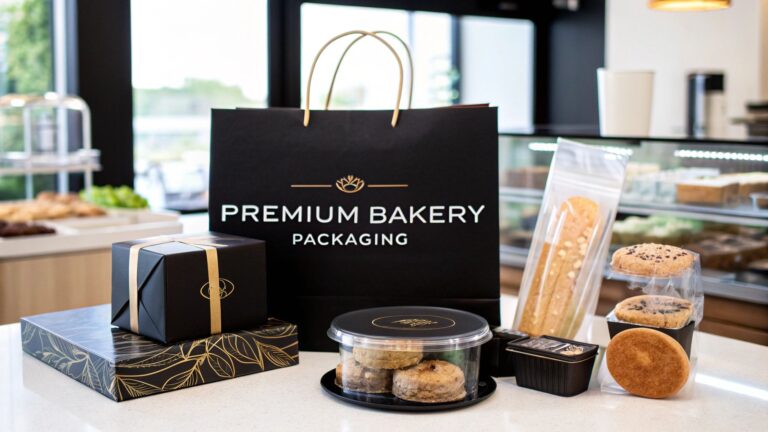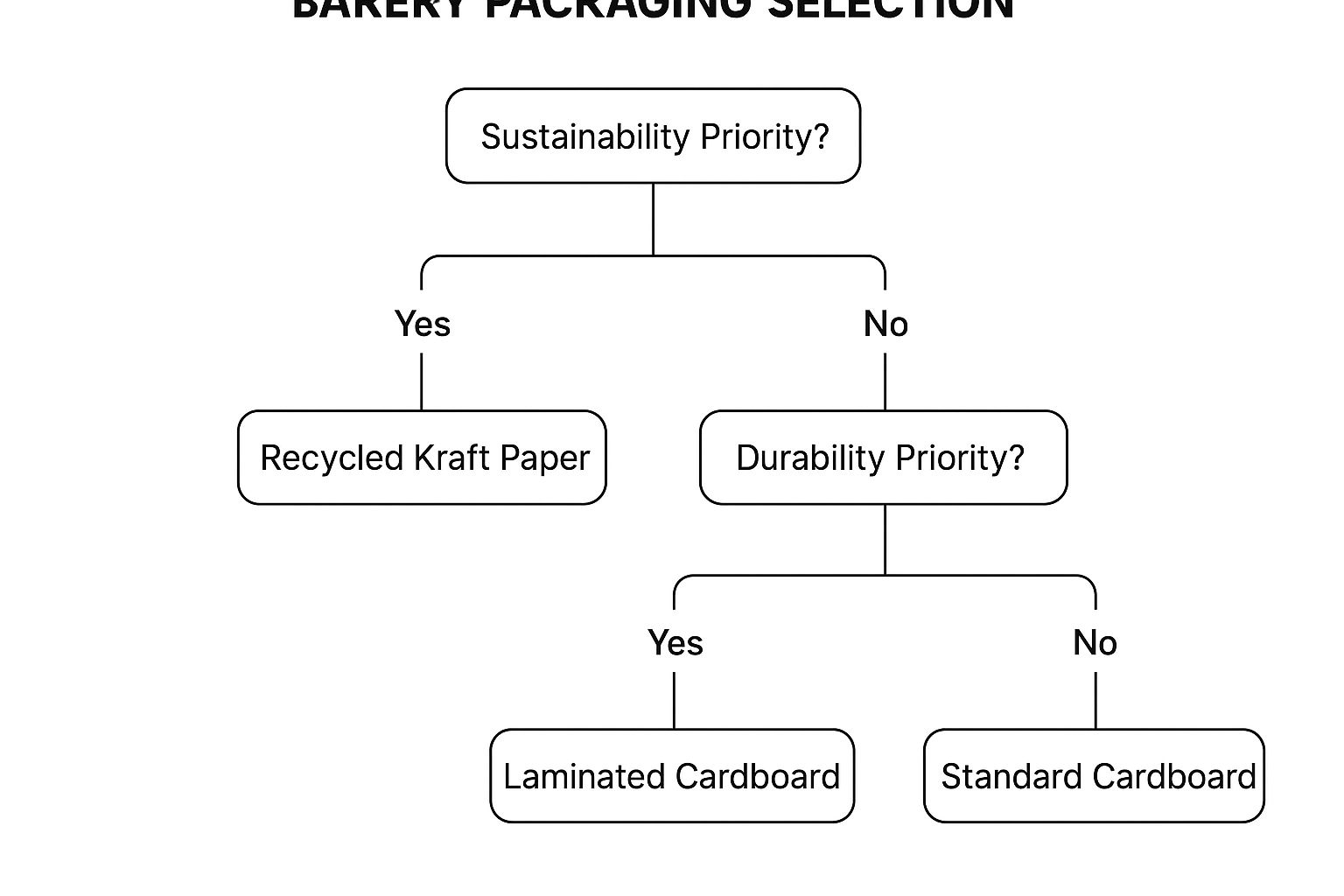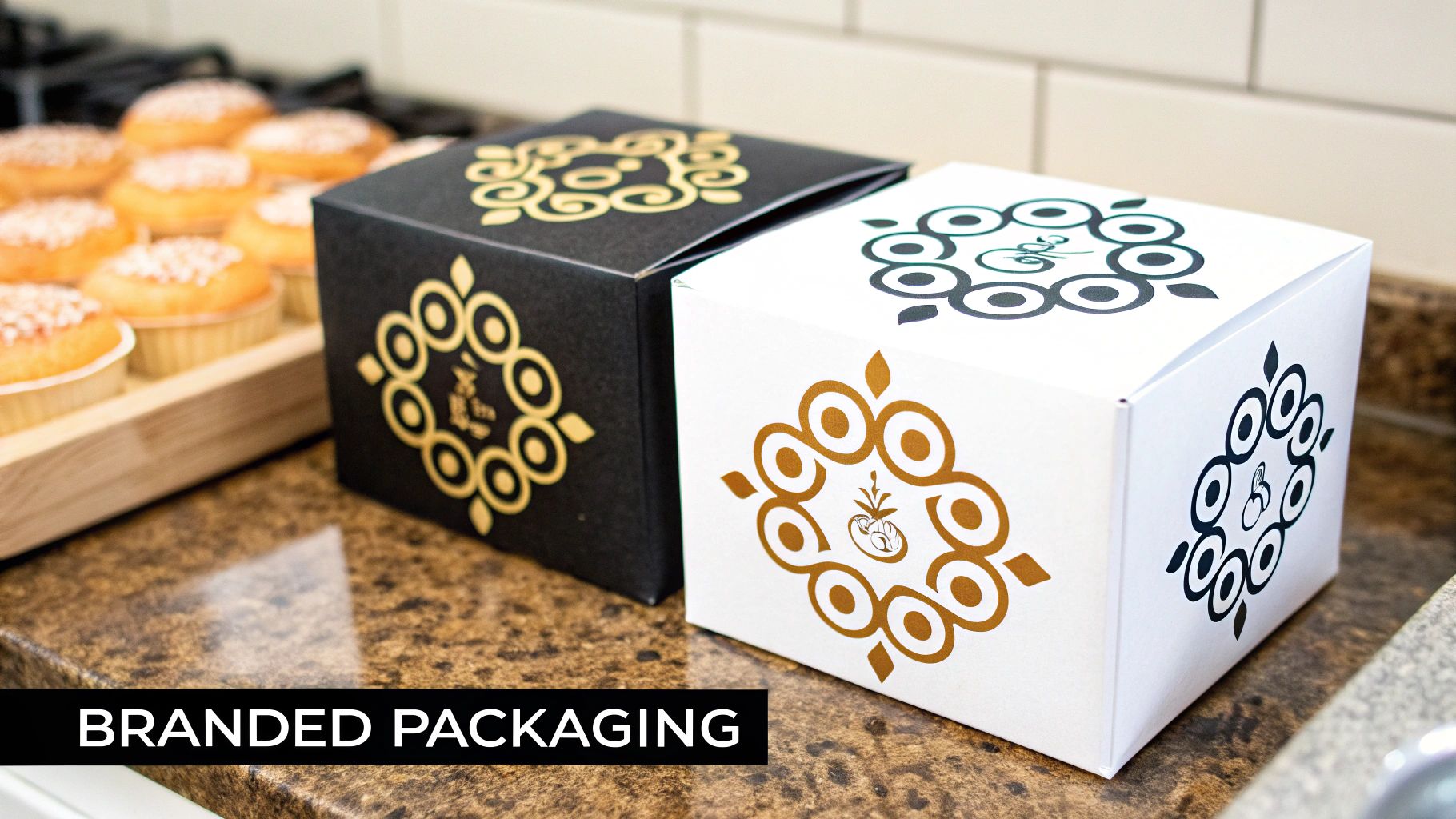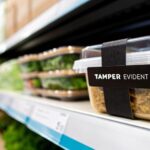Why Bakery Packaging Supplies Are Your Secret Brand Weapon
Your bakery’s delicious creations deserve packaging that’s just as captivating. Bakery packaging supplies are no longer simply about protecting your goods; they’re a key component of your brand identity and the overall customer experience. This reflects a significant industry trend: packaging is now a powerful way to connect with customers, influencing their buying choices and encouraging loyalty to your brand.
The Psychology of Packaging
Think about receiving a beautifully wrapped gift. The feeling of anticipation, the excitement as you unwrap it – that’s the emotion you want to create with your bakery packaging. Attractive packaging supplies create an “unboxing moment” that instantly elevates the perceived value of your products. It connects with the customer on an emotional level, turning an ordinary purchase into a memorable experience.
This often leads to increased social sharing, with customers posting photos of their treats on platforms like Instagram, providing valuable organic marketing for your business.
Presentation and Preservation
Effective bakery packaging does more than just look appealing; it also helps preserve your products. Smart materials and designs keep baked goods fresh, protect delicate pastries from damage, and allow customers to enjoy your treats for longer. This combined emphasis on presentation and preservation leads to greater customer satisfaction and can potentially minimize waste.
Market Growth and Trends
The global bakery packaging market highlights the increasing importance of this sector. In 2024, the market was valued at approximately USD 10,441.44 million. Projections indicate it will reach USD 13,740.23 million by 2031, growing at a CAGR of 4.0%. This growth is driven by several factors, including the rising demand for ready-to-eat foods and the increasing preference for organic and healthy baked goods.
Maximizing ROI With Packaging
Selecting the right bakery packaging supplies can significantly affect your return on investment (ROI). Custom-printed boxes featuring your logo build brand recognition and reinforce your bakery’s unique image. Investing in high-quality materials also conveys a sense of premium quality and can justify higher prices for your products.
From small adjustments to comprehensive redesigns, strategic decisions about your bakery packaging can have a transformative impact on your brand and enhance the customer experience. The right packaging can be a game-changer, driving sales and fostering a loyal customer base.
Material Matters: Choosing the Perfect Packaging Foundation
The foundation of your bakery packaging—the material itself—is key. The right material protects your products and showcases your brand, creating a delightful customer experience. Choosing wisely means considering product fragility, shelf life, and even your brand’s sustainability commitment.
Balancing Protection and Presentation
Different bakery items have unique packaging needs. Delicate pastries need sturdy protection, while crusty breads need breathable materials. Macarons, for instance, require rigid structures to prevent cracking, whereas sourdough needs packaging that allows air circulation. Balancing protection with an attractive presentation is crucial for reflecting your brand.
Exploring Material Options
Bakery packaging comes in various forms, each with pros and cons. Kraft paper offers a rustic, natural look and is often biodegradable. This appeals to environmentally conscious consumers. However, it may not be suitable for products needing high moisture resistance. Cardboard, a packaging staple, provides excellent structural integrity and is easily printable for branding. Laminated cardboard adds grease and moisture protection, ideal for items like donuts or pastries.
To help visualize the decision-making process when selecting the right packaging materials, the table below highlights the key features of some common materials.
Bakery Packaging Materials Comparison
| Material Type | Moisture Resistance | Transparency | Eco-Friendliness | Cost | Best For |
|---|---|---|---|---|---|
| Kraft Paper | Low | None | High | Low | Rustic breads, dry goods |
| Cardboard | Medium | None | Medium | Medium | Cakes, cookies, general baked goods |
| Laminated Cardboard | High | None | Low | High | Donuts, pastries, moist items |
| Plastic (PET/PVC) | High | High | Low | Medium | Displays, specialty items |
| Bioplastics (PLA) | Medium | High | High | High | Eco-conscious brands, delicate items |
This table provides a quick overview of various packaging materials. Choosing the right material depends on the specific product and brand image.
This infographic visualizes material selection, starting with sustainability and durability. If sustainability is key, recycled Kraft paper is a strong contender. If durability is paramount, laminated cardboard offers superior protection, while standard cardboard balances cost and performance.
The Market’s Growing Demand for Bakery Packaging
Demand for bakery packaging is rising, mirroring the bakery industry’s growth. The confectionery and bakery packaging market is projected to reach USD 182.62 billion by 2033. It’s expanding at a CAGR of 4.54% from 2025 to 2033. Growth is pronounced in the Asia Pacific region, where a growing food industry and increased urbanization drive the need for sustainable and functional packaging.
Hybrid Solutions and Innovation
Combining materials often creates effective packaging. A cardboard box with a clear plastic window offers both protection and product visibility, tempting customers while safeguarding content. Innovation in bakery packaging continues to improve product preservation and brand presentation.
Aligning Materials With Brand Values
Packaging material speaks volumes about your brand. Eco-friendly materials show a commitment to sustainability, while premium materials signal high quality. Consider your target audience and brand identity. The perfect packaging enhances the perceived value and the deliciousness of your bakery creations.
Product-Perfect Packaging: Solutions That Showcase Your Creations
Generic bakery packaging rarely does a product justice. Imagine a delicate éclair crammed into a box meant for a loaf of bread—a recipe for disaster! Choosing product-specific packaging is essential for both presentation and preserving the quality of your baked goods. This means selecting the right bakery packaging supplies for each item, from cupcakes to croissants.
The Perils of Generic Packaging
Using generic packaging can lead to broken cookies, squashed cupcakes, and disappointed customers. A cake box without proper support might shift during delivery, ruining a beautifully decorated cake. Likewise, inadequate ventilation can soften a crisp bread crust, making it unappetizing. These seemingly small details can significantly impact customer satisfaction and your brand’s reputation.
Tailored Solutions for Every Treat
Luckily, there’s a wide variety of specialized bakery packaging solutions available. Sturdy cake boxes with inserts prevent movement during delivery, protecting elaborate frosting designs. Bread bags with micro-perforations provide the ideal airflow to maintain a perfect crust. Specially designed inserts for cupcake boxes prevent frosting from sticking to the lid, ensuring a pristine presentation. These tailored solutions demonstrate a commitment to quality and show customers that you care about their experience. The visual presentation is key.
The Psychology of Visibility
Visibility plays a significant role in purchasing decisions. A clear window on a cake box allows customers to see the treat inside, tempting them to buy. This “window effect” leverages the visual appeal of baked goods and can significantly increase sales. Furthermore, structurally sound packaging, such as corrugated cardboard inserts for pie boxes, can reduce product damage during transit by over 70%, saving money on replacements and refunds.
Extending Shelf Life Naturally
Proper packaging can extend the shelf life of your products naturally. Moisture-resistant materials for cookies help prevent staleness, while airtight containers keep bread fresh for longer. This reduces waste and improves the customer experience. The growing demand for attractive and technologically advanced packaging is fueling innovation in the packaging industry. The global bakery packaging machine market is expected to grow from USD 3.74 billion in 2025 to USD 6.06 billion by 2034, highlighting the importance of this evolving sector.
By considering the specific needs of your baked goods, you can choose packaging that showcases their beauty, maintains their quality, and creates a lasting positive impression on your customers.
Sustainability That Sells: Beyond Basic Eco-Friendly Claims
Consumers are increasingly aware of the environmental impact of their purchases, and bakery packaging is no exception. Simply labeling a product “eco-friendly” isn’t enough anymore. Today’s customers want genuine sustainability, and they’re willing to support businesses that prioritize it. This means bakeries must move past greenwashing and embrace truly sustainable practices.
Certifications That Matter (and Those That Don’t)
Numerous certifications exist for sustainable packaging, but not all carry the same weight with consumers. Some, like the Forest Stewardship Council (FSC) certification for paper products, resonate strongly with buyers looking for responsibly sourced materials. Others might be less recognizable or perceived as marketing ploys. Understanding which certifications truly influence purchasing decisions is crucial for maximizing your investment in sustainable bakery packaging.
Balancing Environmental Goals With Business Realities
Sustainability is essential, but it also needs to be practical. Switching to entirely compostable packaging might seem ideal, but it could significantly increase costs or negatively impact product shelf life. Finding the right balance involves considering several factors: your product’s specific needs, your budget, and your target audience.
For example, a bakery specializing in delicate pastries might prioritize packaging that offers superior protection, even if it means using slightly less eco-friendly materials. However, a bakery selling rustic loaves could opt for fully recyclable Kraft paper, aligning with its brand image and appealing to environmentally conscious consumers.
Considering how the design impacts the overall customer experience and contributes to a high-converting online store ensures your packaging showcases your creations.
The Power of Plant-Based Materials
Plant-based materials are gaining popularity in the bakery packaging industry. These materials often offer performance benefits beyond their eco-friendly appeal. For instance, some plant-based films provide excellent moisture resistance, keeping baked goods fresher for longer. Additionally, certain plant-based materials are naturally compostable, offering a comprehensive lifecycle solution.
Communicating Your Sustainability Story
Authentic communication is key to building trust with customers. Clearly and concisely explain your sustainability initiatives on your packaging and website. Share the story behind your material choices and the benefits of your eco-friendly practices. This transparency builds a stronger connection with your customers, reinforcing their decision to support your bakery.
To help bakeries choose the best sustainable packaging options, we’ve compiled a table summarizing key materials and their characteristics:
Sustainable Packaging Options for Bakeries
| Packaging Type | Renewable Source | Compostability | Recycling Options | Shelf Life Impact | Relative Cost |
|---|---|---|---|---|---|
| Plant-Based Films (PLA) | Yes (Corn, Sugarcane) | Industrial Composting | Limited | Comparable to conventional plastic | Moderate to High |
| Kraft Paper | Yes (Wood Pulp) | Backyard Composting | Widely Recycled | Can be affected by moisture | Low |
| Molded Fiber (Bagasse) | Yes (Sugarcane Pulp) | Industrial Composting | Limited | Good for dry goods | Moderate |
| Recycled Cardboard | Yes (Recycled Paper) | Backyard Composting | Widely Recycled | Good for dry goods | Low to Moderate |
| Glass | Yes (Sand) | Not Compostable | Widely Recycled | Excellent | High |
This table showcases some of the most common sustainable options and allows for a comparison of factors like cost, compostability, and impact on shelf life. Choosing the right packaging involves balancing these practical considerations with your bakery’s specific needs and values.
Gradual Transitions for Long-Term Success
Switching to sustainable packaging doesn’t need to happen overnight. Start small, perhaps by using recycled paper bags or switching to compostable cupcake liners. Gradually introduce new materials and packaging designs as your budget allows. This phased approach minimizes disruptions and allows you to experiment with different options before making large investments.
Bakeries have seen impressive results through these strategic changes, with some reporting sales increases of 32% after implementing eco-friendly packaging. This demonstrates the significant influence of sustainability on consumer behavior.
Packaging That Tells Your Story: Customization That Converts
Your bakery packaging offers valuable marketing real estate. Are you using it effectively? The right bakery packaging supplies are more than simple containers; they represent your brand. With careful customization, basic boxes become powerful storytellers, forging connections with your customers. This section explores how personalized packaging elevates your brand and boosts sales.
From Ordinary to Extraordinary: The Power of Branded Packaging
Imagine two bakeries selling the same delicious chocolate chip cookies. One uses plain boxes, the other uses custom-printed boxes with their logo, a unique font, and an eye-catching color scheme. Which cookie seems more tempting? Custom bakery packaging elevates your products, conveying a sense of quality and professionalism. It distinguishes your brand and creates a memorable customer experience.
Customization on a Budget: High-Impact Strategies for Small Bakeries
Creating custom packaging doesn’t have to break the bank. Even small bakeries can make a big impression. Small details like custom stickers with your logo, branded ribbons, or handwritten thank-you notes add a personal touch. These simple gestures significantly enhance the customer experience and can encourage social media sharing, turning satisfied customers into brand ambassadors.
Printing Techniques That Pop: Showcasing Your Brand
Different printing techniques offer various levels of customization and visual appeal. Flexographic printing is a cost-effective choice for large orders, enabling vibrant colors on various materials. Digital printing is perfect for smaller orders, offering greater design flexibility for personalized messages or seasonal themes. Selecting the right printing technique depends on your budget, order size, and desired aesthetic.
Seasonal Packaging: Boosting Sales During Key Periods
Seasonal packaging is an effective strategy for leveraging holidays and special occasions. Limited-edition designs for Valentine’s Day, Halloween, or Christmas create buzz and a sense of urgency. This can encourage impulse buys and increase sales during peak seasons. It also allows bakeries to engage with customers festively, building brand loyalty and encouraging repeat business.
The Psychology of Color and Unboxing: Creating Memorable Moments
Color significantly impacts customer perception of your brand and products. Warm colors like red and orange stimulate appetite, while cool colors like blue and green evoke feelings of freshness and tranquility. Strategic color use can influence purchasing decisions and reinforce your brand identity. The unboxing experience is also crucial. Thoughtful details inside the box, such as tissue paper or a small gift, create a memorable moment customers might share.
Testing Your Packaging: Minimizing Risks and Maximizing ROI
Before making a large investment in custom packaging, test your ideas. Small-scale trials with different designs and materials provide valuable feedback on customer preferences and your packaging’s practical performance. This minimizes risks and ensures your final packaging resonates with your target audience and supports your business goals, maximizing your return on investment.
By understanding the psychology of packaging design and implementing effective customization strategies, your bakery packaging can become a powerful tool. It tells your brand’s story, attracts customers, and ultimately drives sales.
Sourcing Success: Managing Your Packaging Supply Chain
Finding reliable bakery packaging supplies shouldn’t be a headache. Just as you carefully perfect your recipes, a well-managed supply chain ensures you have the right packaging at the right time, at a price that fits your budget. This section, drawing on advice from successful bakery owners, provides practical strategies for sourcing success.
Navigating Minimum Order Requirements
Many suppliers set minimum order quantities (MOQs), a common challenge for smaller bakeries with limited storage space. One solution is to negotiate smaller initial orders to check product quality and suitability before committing to larger quantities.
Another tactic is collaborative purchasing with other local bakeries. By combining your orders, you can meet MOQs and potentially get volume discounts without excess inventory.
Evaluating Sample Quality: A Critical Step
Don’t skip evaluating samples. Request samples of different bakery packaging supplies and test them thoroughly with your products. This shows how the packaging performs under real-world conditions, such as temperature changes and transport.
This proactive step prevents expensive surprises with large orders that turn out to be unsuitable.
Negotiation Approaches That Work
Negotiation isn’t just for big businesses. Small bakeries can also secure better terms. Start by building relationships with several suppliers. This fosters competition and gives you negotiating power.
Clearly communicate your needs and be prepared to walk away if a supplier can’t meet them. Understanding your needs and market alternatives can lead to better pricing.
Mastering Inventory Management
Effective inventory management is essential. Set up a system that tracks stock levels, forecasts demand, and automatically triggers reordering. This prevents both stockouts, which disrupt production, and overstocking, which ties up funds.
Software like Microsoft Excel or other inventory management solutions can significantly improve inventory control.
Building Redundancy: A Safety Net for Your Supply Chain
Depending on a single supplier is risky. Disruptions like production delays or natural disasters can leave you without crucial bakery packaging supplies. Establish relationships with multiple suppliers for redundancy.
This ensures you always have a backup, protecting your business from unexpected interruptions.
Creative Approaches to Collaborative Purchasing
Collaborative purchasing has many benefits for small bakeries. Working with other businesses provides access to volume discounts and possibly lower shipping costs.
This cooperative approach is especially helpful for specialized or custom-printed bakery packaging, where MOQs are often higher.
By using these strategies, you can create a resilient and cost-effective supply chain, ensuring your bakery always has the quality packaging it needs to protect and present your products. For all your bakery packaging needs, consider MrTakeOutBags.com.








Comments are closed.